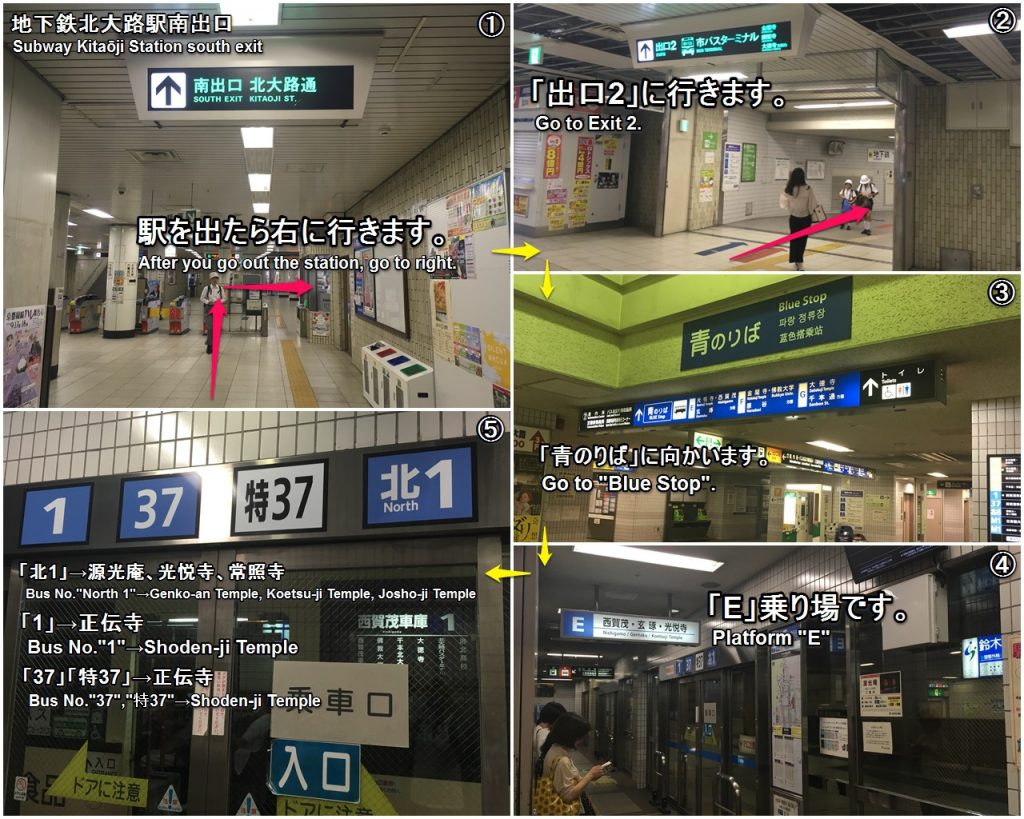Genko-an Temple, a temple of the Soto sect, is situated in Takagamine in Kita Ward, Kyoto City.
The honorific mountain name prefixed to a temple’s name of this temple is “鷹峰山(Yohozan)”.
Therefore, the official name of this temple is “鷹峰山寶樹林源光庵(Yohozan Hojurin Genkoan)”.
This temple was founded as “復古堂(Fukko-do)” which was a temple of the Rinzai sect in 1346 by “徹翁義享(Giko Tetto)”.
Afterwards, this temple was converted to a Soto sect in 1694 by “卍山道白(Dohaku Manzan)” and became the name called “源光庵(Genko-an Temple)”.
Two famous windows which are implicated in a state of enlightenment of “禅(Zen)” are put into the main hall of a Buddhist temple of this temple.
These windows are called “enlightenment window” and “delusive window”, and the scenery to look at from these windows are very splendid.
In addition, there are a temple such as Koetsu-ji Temple and Josho-ji Temple in the neighborhood of this temple.
Contents:
- About Genko-an Temple
- Satori-no-mado and Mayoi-no-mado
- The bloody ceiling
- Goshuin of Genko-an Temple
- How to get to Genko-an Temple
1.About Genko-an Temple
Established as a temple of the Rinzai sect of Zen Buddhism in 1346, Genko-an Temple was turned into a temple of the Soto sect in 1694. The Zen temple is commonly called “Fukko Zenrin (restored Zen temple).” It is said that the present main hall was constructed when it was turned into a Soto temple.
引用(citation):https://www.jnto.go.jp/eng/spot/shritemp/genkoantemple.html
Open:9:00~17:00
Admission Fee:400 yen(Junior high school students or older),200 yen(Elementary school students or younger)*Time of autumnal leaves is another fee.
Adress:47, Takagamine Kitatakagaminecho, Kita-ku Kyoto-shi, Kyoto, 603-8468, Japan
Phone Number:+81-75-492-1858
Genko-an Temple is a temple of the Soto sect now.

This is the “総門(outer gate)” which is the entrance of this temple.
This outer gate is a relatively new building rebuilt as memory of 300 anniversaries of death of Dohaku Manzan.

This is the “山門(main gate)” of this temple.Two round windows are designed to the upper echelon of this gate. (It is a very characteristic design.)
In “禅(Zen culture)”, the round form is considered to be “Clean, clear heart without the prejudice”.
In addition, it is said that the round window expresses “a macrocosm”.
An idiom called “復古禅林(fukkozenrin)” is written to the signboard of this gate. It comes from the historical fact which Dohaku Manzan rebuilt this temple over a period of more than 40 years.

This is the bell tower which is adjacent to the main gate.

There is the “本堂(main hall)” of this temple when we go through the main gate.
The main hall was built in 1694.
There are “the enlightenment window”, “the delusive window” and “the bloody ceiling” in this main hall.
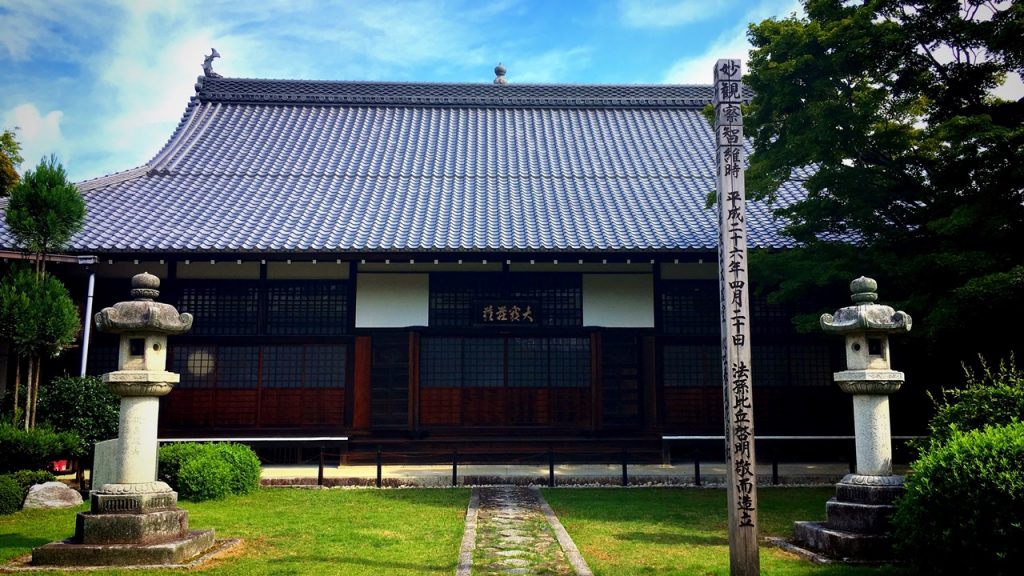
The principal image of this temple is “釈迦牟尼佛(Shaka Nyorai (Shakyamuni))”.

The building in the left side of the main hall is “開山堂(Kaizan-do)”.
This building is built in 1719 and is also called “復古堂(Fukko-do)”.

Maintenance is perfect, and the courtyard of this temple is very beautiful, too.

We can enter this temple from “書院(Shoin (Study Hall))” which is adjacent to the main hall.
(Admission fee is 400 yen (adult). (The timing of the autumn leaves is 500 yen (adult).)

A folding screen made with Yaku cedar is displayed in the room of the 書院(Shoin).
This is a very precious folding screen, because the Yaku cedar is registered with a world heritage now, and do not be able to cut down the Yaku cedar now.

In another room, there is a fusuma picture which was drawn by Sekkei Yamaguchi who is the illustrator in the middle of Edo era.

Because these are made to be able to feel a state of the Zen, the scenery to watch from a window and the veranda of this temple is very beautiful.
The main hall to look at from the room of the Shoin.

The maple tree with beautiful green leaf to look at from the room of the shoin.

The room of the Shoin to look at from the main hall.

The maple tree with beautiful green leaf to look at from the main hall.

“釈迦牟尼佛(Shaka Nyorai (Shakyamuni))” that is a principal idol of this temple is worshiped into the main hall.
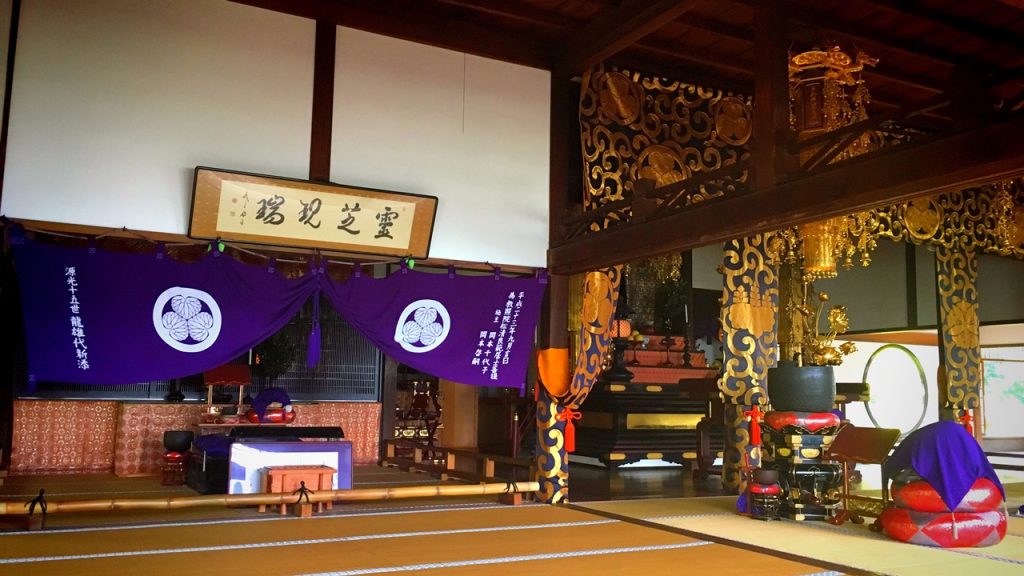
2.Satori-noMado and Mayoi-no-mado
Two famous windows which are implicated in a state of enlightenment of “禅(Zen)” are put into the main hall of a Buddhist temple of this temple.
The round window of left side is “Satori-no-mado”, and the square window of right side is “Mayoi-no-mado”.

The quadrangle of “delusive window” expresses the four pains that are part of the Buddhist doctrine.
The four pains are “怨憎会苦(Onzoeku)”, “愛別離苦(Aibetsuriku)”, “求不得苦(Gufutokku)” and “五陰盛苦(gonjoku)”.
“怨憎会苦(Onzoeku)”is the pain that you must encounter a person whom you dislike.
“愛別離苦(Aibetsuriku)” is the pain that you must break up with a beloved person.
“求不得苦(Gufutokku)” is the pain that that not to be able to get the thing which oneself hopes for.
“五陰盛苦(gonjoku)” is the pain that is caused by “地, 水, 大, 風, 空” which is five elements constituting the mind of the person.

The round form of “Satori-no-mado” teach a neutral posture(performance) to you.

At first, we watch “Mayoi-no-mado”, and we reconsider(ask) ourselves.
Next, we watch “Satori-no-mado”, and we accept ourselves as is.
By so doing, we are led to the state of enlightenment.
Thus, let’s watch this window in the order of “Satori-no-mado”, “Mayoi-no-mado”.

How did you like it? Were you able to be enlightened?
By the way, this temple is also very beautiful at the time of autumn colored leaves.
But is crowded very much at the time of colored leaves.
Please prepare yourself if you will go to this temple while the fall foliage season.
引用(citation):http://blogs.yahoo.co.jp/sas0634/9861047.htmlThe mail hall. (during the fall foliage season)
引用(citation):http://blogs.yahoo.co.jp/sas0634/9861047.html
3.The bloody ceiling
There are many stains on the ceiling of the main hall of this temple.
Actually, this stain is a bloodstain!!
There was the castle called Fushimi-Momoyama-jo Castle in old days in Kyoto, and the fight called “the fight of the Fushimi Castle” occurred in this castle in 1600.
So, many people were killed in this fight.
As a result, many bloodstains were scattered on the floorboards.
These floorboards of the Fushimi-Momoyama-jo Castle had been used for the ceiling of the main hall of this temple.
The bloodstain of the footprint has been left clearly on a ceiling.

This is a very big bloodstain… The fear of the fight is handed down from these bloodstain.
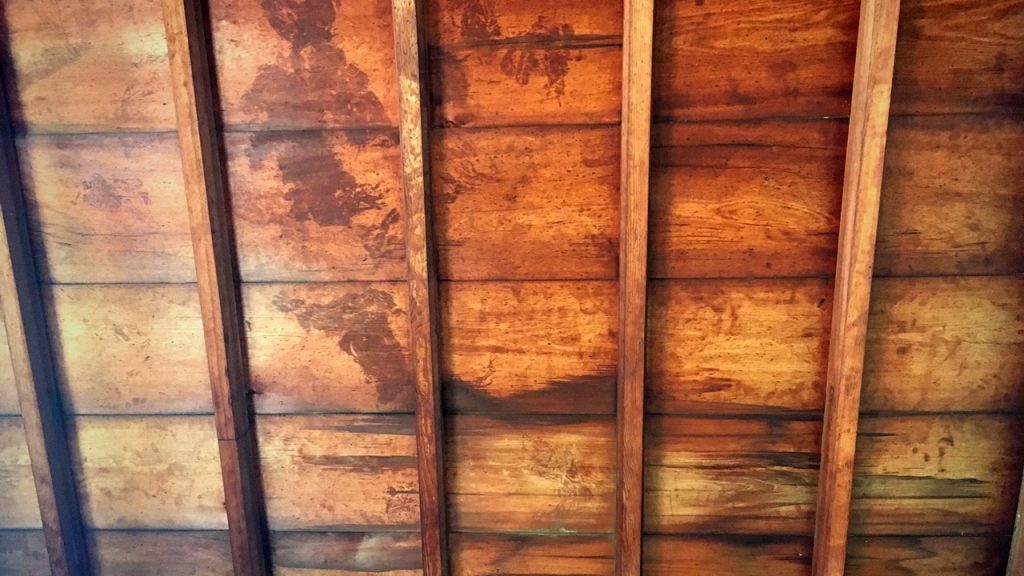
4.Goshuin of Genko-an Temple
The word which can read as “霊芝観世音(Reishi-Kanzeon)” is written to Goshuin with a sumi.
“霊芝観世音(Reishi-Kanzeon)” is one of the Buddha statues enshrined into the main hall.
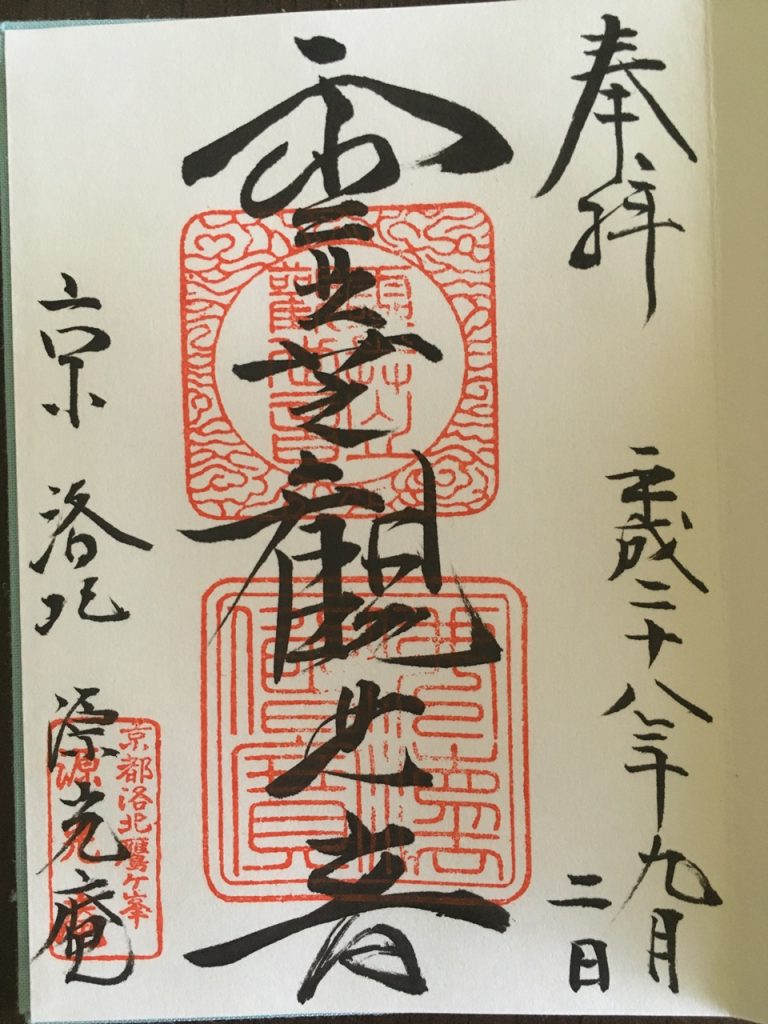
5.How to get to Genko-an Temple
The nearest station of Genko-an Temple is “Subway Karasuma Line Kitaōji Station”.
Let’s take a bus from Kita-Oji Station.
(Distance from the station to the destinations is approximately 3km. It is about 1-hour walk from the station.)
■Kitaōji Station→Genko-an Temple (In the case of using the bus.)
[Go]
Kitaooji bus terminal, Kyoto City bus “North-1”, bound for Bukkyo Univ./Gentaku
From “Kitaooji bus terminal” → To “Takamine-Genkoanmae” fare: 230 yen
[Return]
Takamine-Genkoanmae, Kyoto City bus “North-1”, bound for Kitaooji bus terminal
From “Takamine-Genkoanmae” → To “Kitaooji bus terminal” fare: 230 yen
■Takamine-Genkoanmae bus stop→Genko-an Temple

How did you like it?
Please try to go to this place.
Have a nice trip! XD
<Let’s search the sightseeing information of Kansai in Japan on ‘Japan’s Travel Manual‘!!>
<This site introduces the easiest way to get Japanese (Kansai) sightseeing spots to you.>








